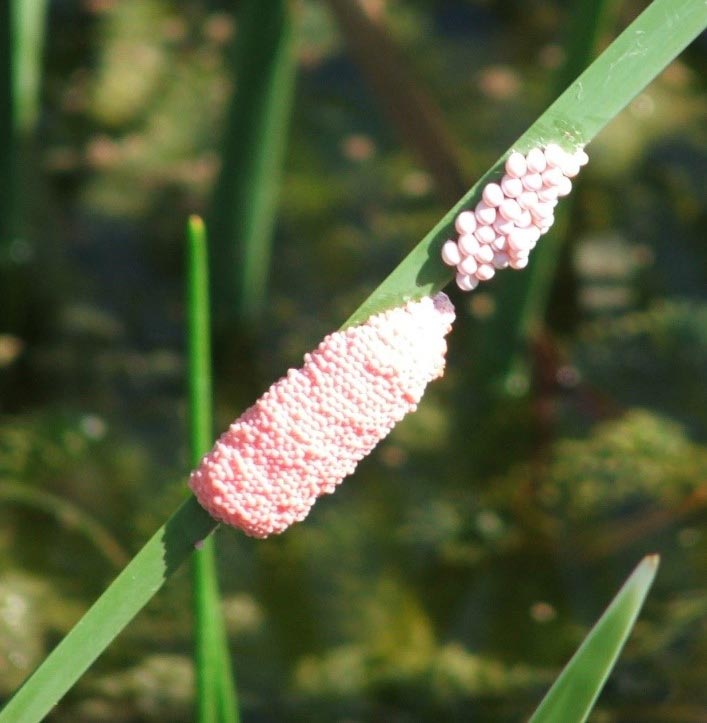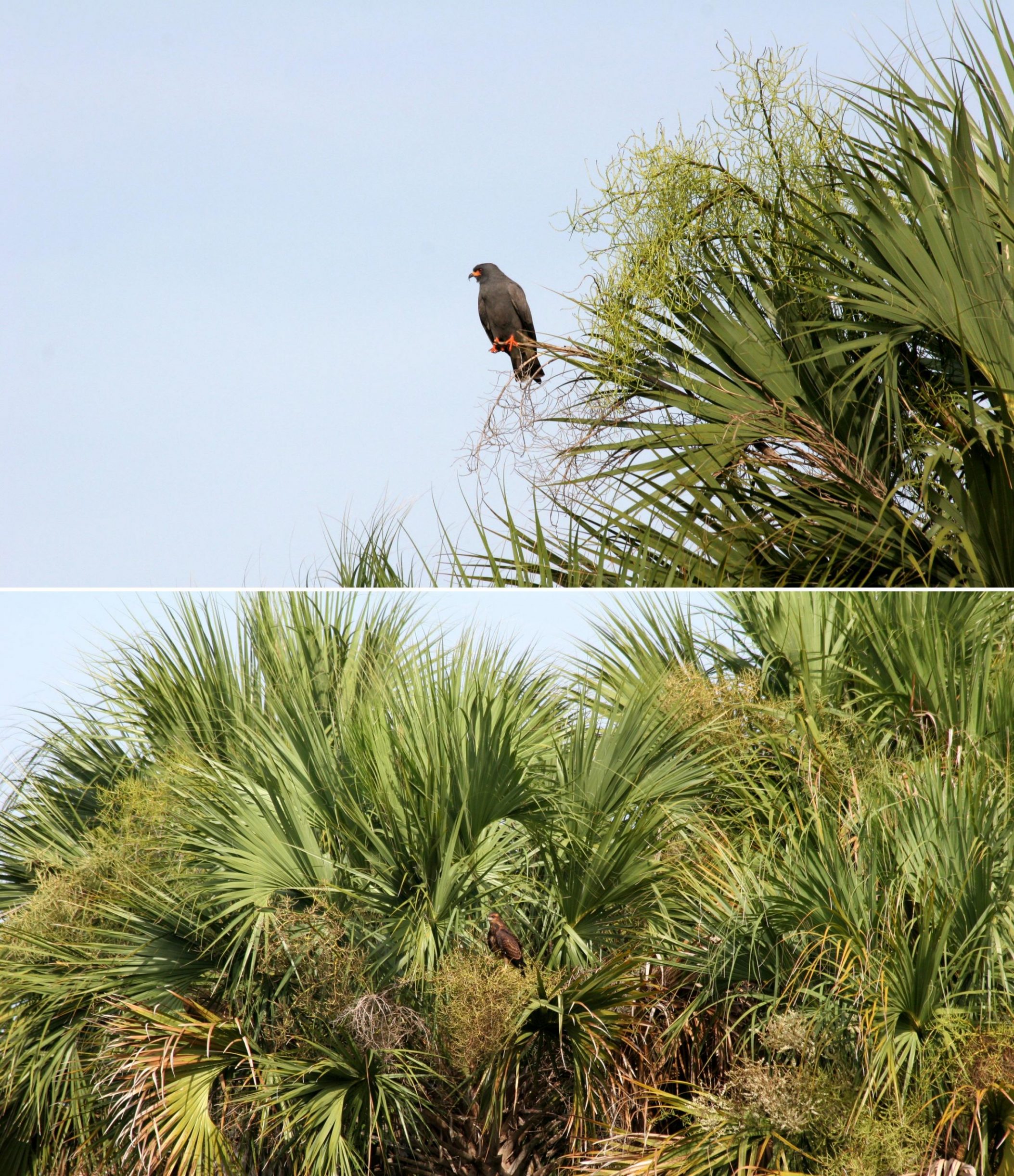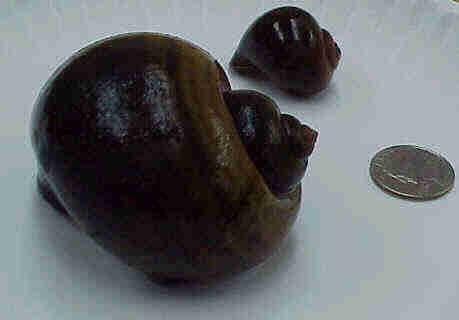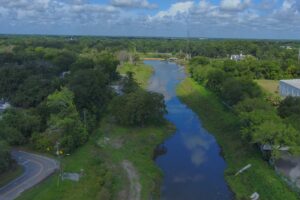District conservation lands provide endangered birds with chance to thrive
A snail that has no business living in Florida may prove to be instrumental in helping save an endangered species.
The island apple snail (Pomacea maculata) is a large freshwater snail native to South America. Like other exotic species that wind up in Florida, the greenish-brown snail was likely dumped from an aquarium into a Florida waterway and the rest is history.
The typical narrative on exotic species in Florida is generally fraught with doom: Lacking a predator, the exotic or invasive species oftentimes dominates its environment and outmuscles competing native species.
However, University of Florida (UF) researchers are seeing a link between the expansion of island apple snail populations and an uptick in endangered snail kite nesting. One of those nesting places is the upper basin of the St. Johns River in Brevard and Indian River counties.
“The kites are reacting to the introduction of the exotic snail and the creation of wetland habitat,” says Dr. Dianne Hall, a St. Johns River Water Management District environmental scientist who manages the UF research contract to study the kites. “We’ve seen increased nesting over the 2009 to 2019 period throughout Florida as island apple snails continue to spread within the state. Between 2015 and 2021, we saw a substantial increase in snail kite nesting as the exotic snails expanded their distribution in the upper basin and wetland forgaging areas increased with the completion of Three Forks Conservation Area in Brevard County and Fellsmere Water Management Area in Indian River County.”
A native egg cluster top, and nonnative on bottom. Native eggs are white, the size of a BB, and laid in a cluster of up to about 50 eggs. Nonnative clusters have pin-head sized eggs, usually are pink (fading toward white), and number in the hundreds. Native apple snails only lay eggs between March and June, on average. Exotic snails lay eggs year-round.
These properties are among the 700,00 acres the District owns or manage throughout its 18-county jurisdiction as part of its work to protect and preserve water resources. In some cases, the properties protect water bodies and wetlands; in others, the land serves as a critical area for recharging Florida’s aquifer, the source of most of the drinking water supply in the District.
Florida’s snail kite population was estimated at more than 3,000 in the late 1990s but plummeted to fewer than 1,000 kites by 2009. By 2019, snail kite numbers had climbed back to just below 3,000 statewide.
Nest counts have also increased in recent years in the upper basin, where the exotic snail began appearing in 2009. Here, nest counts jumped from three in 2015 to 30 nests in 2018 and 31 in 2019. There have been a couple of dips, such as in 2017 when there were only two nests and in 2020 when researchers found no nests, but that doesn’t necessarily mean the kite population took a hit, Hall says.
“Kites are very nomadic,” Hall says. “They travel all around Florida looking for the right place to nest. They need both good nesting and foraging conditions. You can’t count on them returning to the same area year after year if conditions are better elsewhere in the state.”
Snail kites are particularly selective about habitat because their sharply curved beaks make them dietary specialists, feeding almost exclusively on native freshwater apple snails (Pomocea paludosa). Large apple snail populations are generally limited to Florida’s wide-open marshes, places like the District’s Blue Cypress Water Management Area, an area of the upper St. Johns River where the District specifically manages water levels for flood control, limited water supply, and to protect the existing wetland vegetation and native apple snail populations that support nesting and foraging snail kites.
The snail kite’s survival, in part, depends on water level conditions that support apple snails, but wetland habitats are constantly fluctuating due to climatic or management influences. In response, the kites have learned to move between wetlands to find the most prolific snail populations.
Why so much emphasis on a single species of bird? The snail kite is considered an excellent barometer of the success of wetland restoration efforts in Florida and was one of the first species listed under the Endangered Species Act in 1967.
The dramatic decline in the snail kite population during the early 2000s prompted scientists to try to determine the causes for the decline and, in a worst-case scenario, how much longer they could survive.
It’s too soon to say whether the introduction of the island apple snail will be part of the solution for saving the snail kite; there may be drawbacks, Hall says.
“In lab studies, the island apple snails have been known to eat all of the vegetation they encounter while the native apple snail only scrapes algae from the host plant,” Hall says. “Also, despite the increase in nesting, juvenile kite’s survival rates are lower. It could be that the juveniles are on a learning curve and wasting energy when trying to eat island apple snails that are too big. Native snails are about the size of a golf ball, but the exotic species can grow as large as a baseball.”
Nevertheless, it does appear that the island apple snail making their home on District conservation lands may be helping the snail kite veer away from the brink of extinction.








